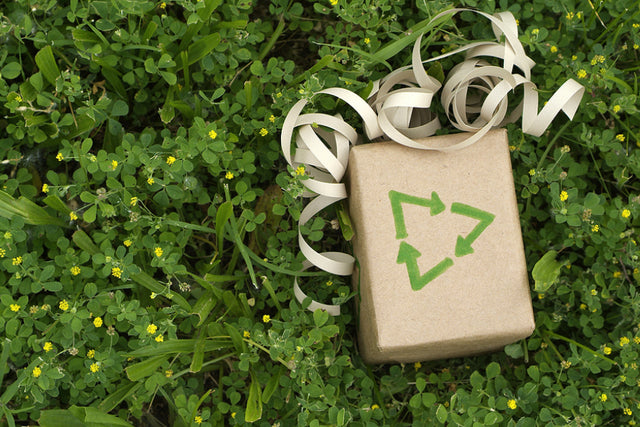The Role of Eco-Friendly Packaging in Zero-Waste Initiatives
In the push toward more sustainable living, the concept of zero-waste initiatives has gained significant traction. At the heart of this movement is the use of eco-friendly packaging, which is an emerging packaging trend and a crucial element in reducing the environmental impact of consumer goods. Businesses and consumers alike are looking for ways to minimise waste, and sustainable packaging solutions are one of the most effective ways to do so. In this article, we will explore the role that eco-friendly packaging plays in zero-waste initiatives and how adopting these practices can lead to a greener future.
Understanding Zero-Waste Initiatives
Zero-waste initiatives aim to reduce the amount of waste sent to landfills by encouraging the recycling, reuse, and composting of materials. This concept is not limited to individuals but extends to businesses, industries, and governments, promoting a circular economy where products are designed with their entire life cycle in mind. Packaging, which has traditionally been a major contributor to waste, is now being reimagined with sustainability at its core.
The demand for eco-friendly packaging has increased as consumers become more environmentally conscious. Companies are being called to innovate, moving away from traditional materials like plastic that take hundreds of years to decompose. Instead, they are opting for alternatives such as recycled cardboard, biodegradable plastics, and reusable containers. Eco-friendly packaging plays a pivotal role in supporting zero-waste initiatives by offering a responsible way to package and deliver products without contributing to the growing waste problem.
Benefits of Eco-Friendly Packaging
One of the major benefits of eco-friendly packaging is its ability to reduce carbon footprints. Materials used in sustainable packaging are often sourced from recycled or renewable resources, which significantly cuts down on the energy required for production. For example, recycled cardboard and paper use far less energy to produce than new materials. Additionally, biodegradable packaging can break down naturally in the environment, avoiding the long-term pollution caused by traditional plastics.
Moreover, eco-friendly packaging aligns with consumer values. Today’s consumers are more likely to support brands that demonstrate a commitment to environmental sustainability. Companies that invest in eco-friendly packaging not only reduce their environmental impact but also enhance their brand image, showing that they care about the planet. This, in turn, can lead to stronger customer loyalty and increased sales.
For businesses in Singapore, offering eco-friendly options like customised sticker labels that are made from sustainable materials can set them apart in a competitive market. Customisation doesn’t have to compromise sustainability, and companies can create eco-friendly designs that appeal to conscious consumers.
Types of Eco-Friendly Packaging
There are various types of eco-friendly packaging available, each with its own set of benefits.
1. Biodegradable Packaging: This type of packaging is designed to break down naturally over time, reducing the amount of waste that ends up in landfills. Biodegradable packaging can be made from a variety of materials, including plant-based plastics and cornstarch.
2. Recycled Packaging: Made from previously used materials, recycled packaging reduces the need for new raw materials and helps to close the loop in the recycling process. Recycled cardboard and paper are common examples of this type of packaging.
3. Reusable Packaging: Rather than being discarded after one use, reusable packaging is designed for multiple uses. Examples include glass jars, cloth bags, and sturdy containers that can be returned or reused by customers.
4. Compostable Packaging: Similar to biodegradable packaging, compostable materials break down in composting environments, returning nutrients to the soil. Packaging made from materials like bamboo, hemp, and other plant fibres is compostable.
By using these types of eco-friendly packaging, businesses can reduce waste and support zero-waste initiatives. These alternatives not only cut down on pollution but also require fewer resources to produce, making them a sustainable choice for companies and consumers alike.
How Businesses Can Contribute to Zero-Waste Initiatives
Businesses can play a significant role in advancing zero-waste initiatives by adopting sustainable packaging practices. One way to do this is by conducting a packaging audit to assess the materials being used and identify areas where more sustainable options could be implemented. For instance, switching to eco-friendly packaging for all products, using sticker labels made from recycled materials, and choosing to buy carton boxes that are biodegradable are all steps in the right direction.
Additionally, educating customers on the benefits of eco-friendly packaging and encouraging them to participate in recycling or reuse programmes can amplify the impact of these initiatives. By creating a partnership with consumers, businesses can foster a culture of sustainability and demonstrate that they are committed to protecting the environment.
Conclusion
Eco-friendly packaging is an essential part of the zero-waste movement. By reducing the environmental impact of packaging materials and encouraging reuse, businesses can contribute significantly to sustainability goals. Whether it’s choosing to buy carton boxes that are biodegradable, using customised sticker labels made from recycled content, or offering innovative packaging solutions, businesses can play an active role in protecting the planet. By adopting eco-friendly packaging solutions, companies not only support zero-waste initiatives but also enhance their brand reputation and appeal to today’s environmentally conscious consumers.
To explore a wide range of sustainable packaging options and find the perfect fit for your business, visit Packink and discover how eco-friendly solutions can transform your packaging process.


0 Comments
There are no comments for this article. Be the first one to leave a message!